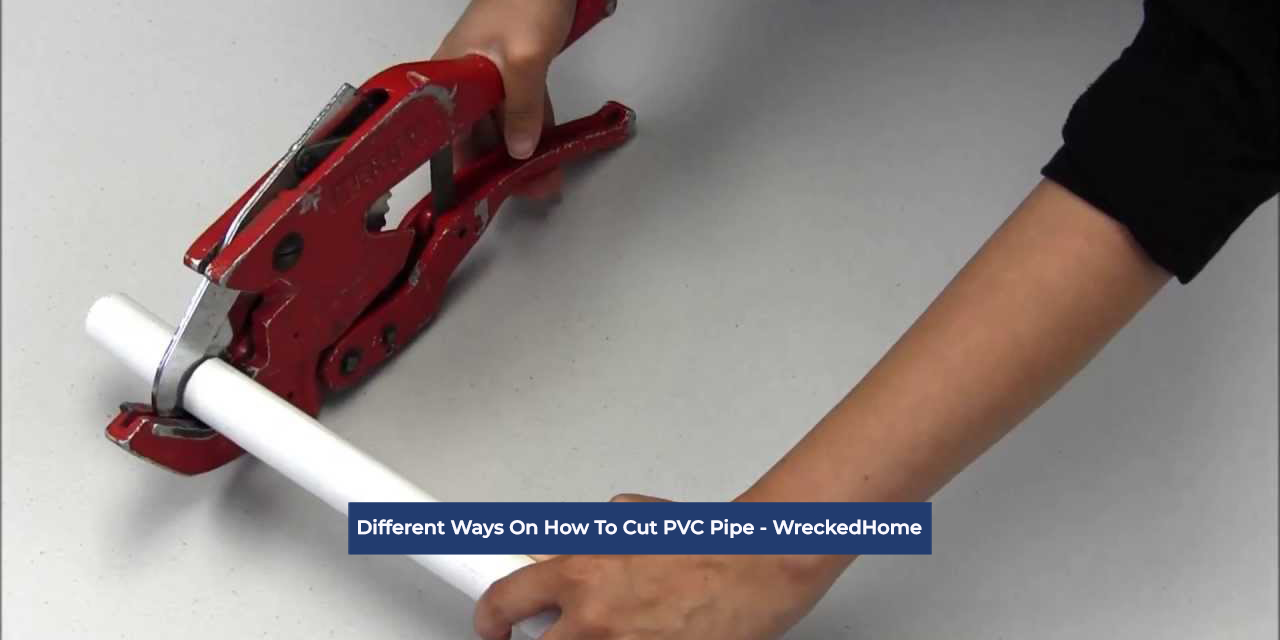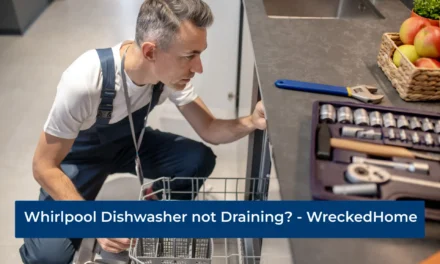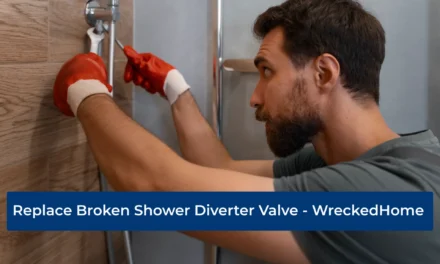PVC, or Polyvinyl Chloride is widely known in the world of construction and DIY projects, primarily due to its flexibility, durability, and affordability. PVC pipes are virtually everywhere whether it’s a construction site or home renovation. They are adaptable to wider projects meaning that they can be molded, bent, and, most importantly, cut to fit varying requirements.
Due to this versatility and flexibility its essential to know how to cut PVC pipe. It’s important to understand proper cutting techniques are not just about getting the right size or shape. These are responsible for longevity of the material, the efficiency of the task, and, above all, the safety of the individual handling it.
With PVC pipe, you must use this product. Therefore, it’s essential to know the basic properties and to handle them in the cutting procedure. In this article we are going to elaborate different ways on how to cut pvc pipe.
Why Proper Cutting is Essential
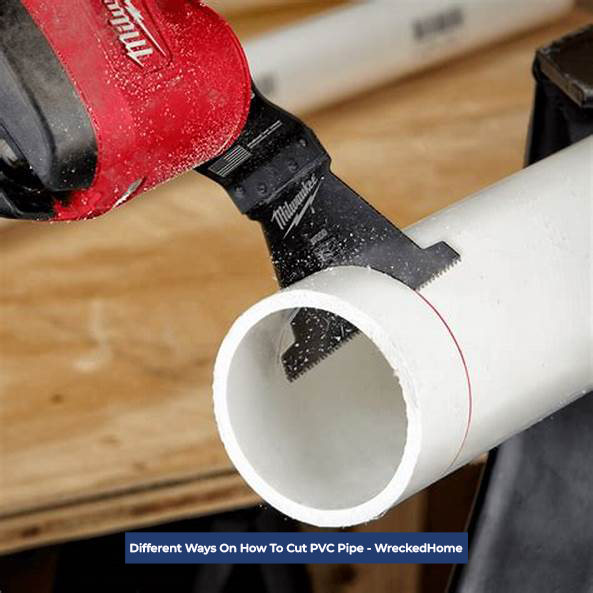
Working with PVC requires aesthetics that relies on precision. Proper cutting also is a necessity of proper functioning. At the forefront of this is the importance of clean cuts. PVC pipe is integrated into a system, whether for modern plumbing, irrigation, or any other purpose.
A jagged or uneven cut can compromise the integrity of these critical points of connection that result in leaks or even complete structural failures over time.
The PVC joint connections are couplings, and solvent cement. The proper cut ensures a snug fit between the pipe and the coupling that maximize the effectiveness of the solvent cement.
On the other hand, improper cuts leave gaps, which not only weakens the bond also results in leaks. So its necessary to know how to cut pvc pipe.
Beyond the functional implications, it’s also a must do factor for safety. Uneven cuts can lead to splintering or the creation of sharp edges that can harm or have risk of injury. In this way, proper PVC cutting is essential to ensure reliability, efficiency, and safety of the entire system in which it’s implemented.
Tools Required for Cutting PVC
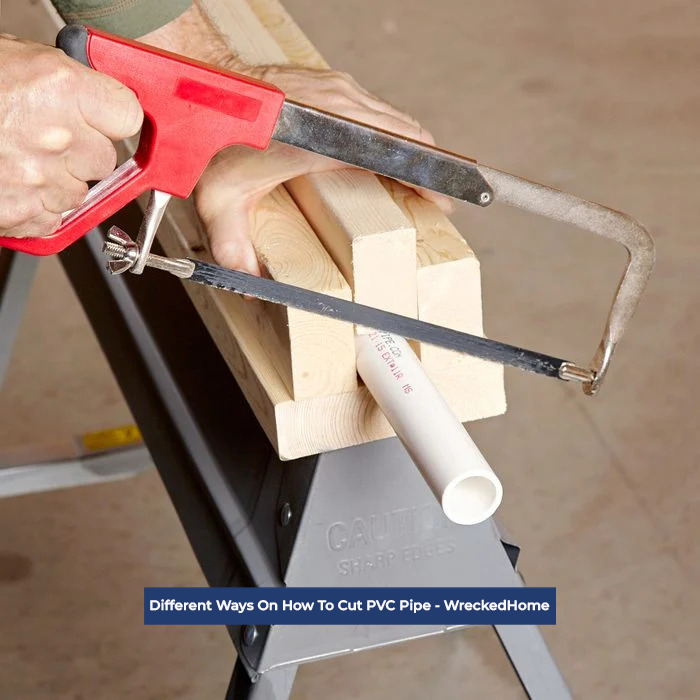
While PVC a versatile and relatively user-friendly material, it requires special tools for proper fine cutting. This fine edge cutting ensures that the task at hand is both efficient and safe.
Whether you’re a DIY enthusiast or a professional plumber these basic tools are an essential element to create the difference between a job well done and potential mishaps. Let’s have a closer look of the essential tools needed when cutting PVC.
1. Safety Gear
PVC may seem smooth but requires precautions to prevent mishaps during the process of cutting. It can often result in jagged or sharp edges. The gloves, safety glasses and dust mask are basic protections to wear. Gloves keep hands safe and secure. It also ensures that you don’t accidentally cut or graze your hands during the process. It also helps in strong grip during pipe cutting.
Eyes also get exposure to flying debris, therefore glasses shield your eyes from any fragments or shards. Another important option is to wear a mask that acts as barrier, preventing you from breathing in these fine particles, ensuring that your respiratory health isn’t compromised.
2. Measuring Tools
The precise measurement is necessary for the fine cutting of PVC. Whether you’re fitting a pipe into a tight space or ensuring a system works, please use a measuring tape and marker.
First and foremost, do measurements with tape and mark the exact spot you plan to cut. This is crucial. Double check your measurement before making any cuts. You must use a visible marker to ensure cuts are precise and in line with your project’s requirements.
Visit our store for 10% off our Tools here.
How to cut PVC pipe with Cutting Tools?
Once you have done marking the next step is to cut the PVC pipe. Do you know how to cut PVC pipe with cutters? Here we are share 5 tools that you can use to cut the PVC pipe.
- Ratchet Cutter: It is tool that has blades. For clean and swift cut tight the blade around pipe and keep it gradually tightening on pipe until it slices through, ensuring a neat edge.
- Hacksaw: It is versatile and household tool that can cut through various materials, including PVC. Use sharp blades for fine cutting.
- PVC Cutter: This is stylish scissor-like design PVC cutting tool. With versatility in sizes it accommodates different PVC diameters.
- Miter Saw: To ease your mind with multiple cuts of same sizes, miter saw can be invaluable. It is useful for larger projects ensuring straight, perpendicular cuts on PVC.
- Rotary Cutting Tool: When you need both straight and curved cuts this tool is amazing. With advanced options, rotary tools are an appropriate cutting tool.
In this way cutting PVC pipe is straightforward. It demands attention to detail and a focus on safety. With right tools and safety measures you can guarantees a more efficient and precise outcome for your project.
Different Cutting Methods
Cutting PVC pipes, with the help of these tools require a range of techniques based on the tools employed. Each tool comes with its own set of benefits and methods, to ensure fine cut. Here’s an exploration of four common methods for cutting PVC.
1. Using a Ratchet Cutter
Ratchet cutters are hand tools specifically designed to provide a clean, swift cut of smaller diameters PVC pipe.
- Open Jaws: Open the jaws of the ratchet cutter and place the PVC pipe between these jaws and mark the area.
- Apply Pressure: Begin squeezing the cutter’s handles. With each squeeze, the cutter will ratchet, the grip become strong and cutting.
- Complete the Cut: Continue squeezing until the cutter goes deep and complete.
- Inspect: Check the cut edge for clean and even cutting.
2. Using a Hacksaw
Hacksaws are versatile hand tools consists of a metal frame and a removable blade.
- Secure the PVC: By using a vice or clamps, fix the PVC steady on a stable surface.
- Begin Cutting: Then place hacksaw on the mark spot and, using short strokes, start your cut.
- Complete the Cut: Once your groove is established, use longer, consistent strokes that should be hard and deep dive.
- Finishing: ensure the cut is fine and make it smooth.
3. Using a PVC Cutter
When it comes to cutting PVC pipes, with a PVC cutter you need minimal effort. Several advantages make PVC cutters stand out:
- Select the Right Size: Make sure to use appropriate diameter pipe for fine cutting.
- Mark Your Cut: Using a marker, to indicate where you want to make the cut.
- Position the Cutter: Open the jaws of the cutter and hold pipe in it.
- Apply Pressure: Firmly squeeze the cutter’s handles and apply force. The blade will pierce the PVC and as you continue to apply pressure, and give even cut on the pipe.
- Inspect the Cut: Check the cut end for any irregularities. If necessary, you need to do manually smoothing effort.
4. Using a Miter Saw
Miter saws are an incredibly versatile and powerful tool. They are also quick and portable.
- Position the PVC: Place the PVC pipe on the miter saw’s table, and reset it for stability.
- Secure the PVC: Hold the PVC firmly against the fence with one hand and use clamp to fix it position.
- Make the Cut: Start the saw and allow it to reach its full speed with sharp blade.
- Inspect: once you see the cut ensure edges are fine.
Tips for Making the Perfect Cut
Working with cutting tools might seem straightforward, but ensuring a perfect cut requires a blend of precision, patience, and a few hidden secrets. Here are five invaluable tips that help you learn how to cut pvc pipe. These ensure a flawless finish every time:
- Mark before Cut: Always start cutting with clear mark. Use a pencil or marker and draw mark in accordance to your measurement.
- Secure Your PVC Pipe: You have noticed moving pipe is difficult to cut. And there are chances of an uneven cut without fixing it. So, use a clamp or ask a friend help to ensure your PVC remains stationary during the cutting process.
- Choose the Right Tool: Not all tools perform alike for every PVC size or type. As ratchet cutters might be perfect for thin pipes, but for thicker pipe you need to consider miter saw or a hacksaw. So it important to understand the project’s needs and select the tool that promises precision and efficiency.
- Maintain Your Tools: You must pay attention to the care and maintenance of your tools. Whether you are professional plumber or looking for your own home project sharpening the blades of your saws or ensuring the ratchet cutter is well-oiled is necessary.
By incorporating these pro tips into your PVC cutting routine the chances of uneven cutting PVC Pipe is lower. Also it ensure the safety and save time.
Conclusion
The art of cutting PVC might seem simple, but it requires a professional like grip and expertise. This guide provides you pro tips and ways from selecting the right tools to ensuring precision in measurements and cuts.
Safety, of course, remains paramount; the right precautions not only safeguard against accidents but also give you confidence like experienced plumber. By adopting best practices, paying heed to essential tips, and valuing the importance of preparation you can attain flawless fine results.
Whether you’re embarking on a DIY project or diving into professional plumbing, your knowledge about how to cut PVC pipe should always prioritize accuracy, and safety.
For any repairs, installations, builds, or questions; We recommend you to hire a professional. Find A Pro Near You Here!

